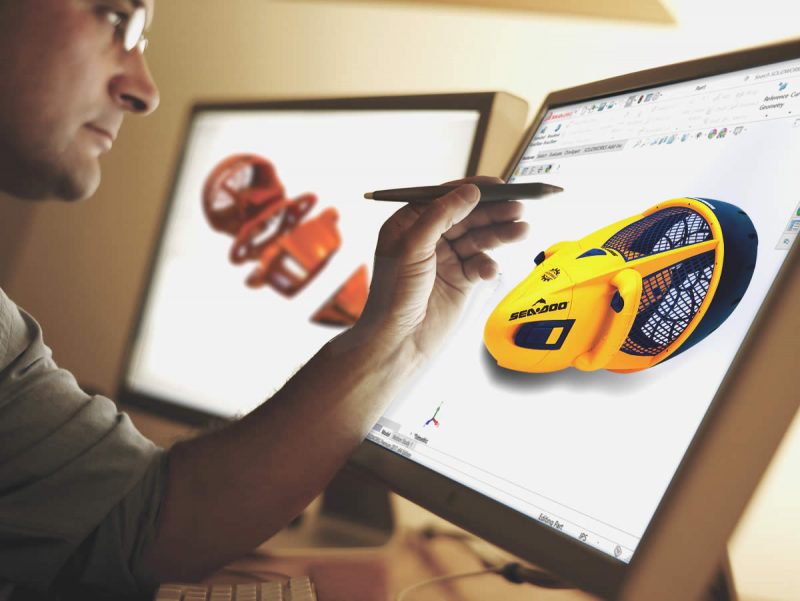Top 3D Design Software in 2024: A Comparative Review
Welcome to our in-depth review of the leading 3D design software in 2024. As the digital landscape continues to evolve, 3D design software plays an increasingly vital role across various industries, from architecture and engineering to entertainment and gaming. Whether you're a seasoned professional or a budding enthusiast, selecting the right 3D design software can significantly impact your projects' quality and efficiency.
In this article, we'll explore and compare the top 3D design software available in 2024, helping you make an informed decision tailored to your specific needs.
Autodesk Maya
Overview: Autodesk Maya remains a powerhouse in the realm of 3D design, celebrated for its robust feature set and versatility. Used extensively in the entertainment industry for animation, visual effects, and game development, Maya offers a comprehensive suite of tools for modeling, texturing, rigging, animation, and rendering.
Pros:
Versatility: Maya excels in handling complex projects across various disciplines, from character animation to architectural visualization.
Extensive Plugin Support: Its vast ecosystem of plugins enhances functionality and workflow efficiency
Industry Standard: Widely adopted in professional settings, making it an essential skill for aspiring 3D artists.
Cons:
Learning Curve: Due to its extensive feature set, Maya has a steep learning curve, requiring significant time and dedication to master.
Resource Intensive: Running Maya smoothly may demand powerful hardware, potentially posing a barrier for some users.
Cost: While Autodesk offers various subscription options, Maya's pricing might be prohibitive for individual hobbyists or small businesses.
Blender
Overview: Blender, an open-source 3D creation suite, has emerged as a formidable competitor to commercial software with its extensive feature set and active community support. From modeling and sculpting to animation and rendering, Blender offers a comprehensive toolset suitable for professionals and hobbyists alike.
Pros:
Cost: Being open-source, Blender is free to download and use, making it accessible to a wide range of users.
Community Support: Blender boasts a vibrant community of users and developers, providing extensive documentation, tutorials, and addons.
Constant Development: The Blender Foundation regularly releases updates and improvements, ensuring that the software remains competitive and up-to-date with industry standards.
Cons:
Interface Complexity: Some users may find Blender's interface overwhelming, especially newcomers to 3D design software.
Steeper Learning Curve: While Blender is user-friendly compared to some commercial alternatives, mastering its full potential still requires time and dedication.
Compatibility Issues: Interoperability with certain industry-standard formats or pipelines may present challenges for professional workflows.
Cinema 4D
Overview: Cinema 4D, developed by Maxon, is renowned for its intuitive interface and powerful features, making it a popular choice among motion graphics artists, visual effects professionals, and designers. With a focus on ease of use and efficiency, Cinema 4D offers a range of tools for modeling, animation, lighting, and rendering.
Pros:
User-Friendly Interface: Cinema 4D's intuitive interface and workflow streamline the 3D design process, reducing the learning curve for new users.
Versatility: From motion graphics and product visualization to architectural rendering, Cinema 4D excels in a wide range of applications.
Integration with Other Software: Cinema 4D seamlessly integrates with popular applications like Adobe After Effects, further enhancing its capabilities for motion graphics and visual effects.
Cons:
Cost: While Cinema 4D offers various pricing options, including subscription and perpetual licenses, it may still be costly for some users compared to free or open-source alternatives.
Limited Advanced Features: Some advanced features found in competing software, such as character animation tools in Maya, may be lacking in Cinema 4D.
Less Extensive Plugin Ecosystem: While Cinema 4D does support plugins, its ecosystem may not be as extensive as those of other software like Maya or Blender.
Conclusion
Selecting the right 3D design software depends on various factors, including your specific needs, budget, and level of expertise. Autodesk Maya, Blender, and Cinema 4D each offer unique strengths and weaknesses, catering to different user preferences and project requirements.
For professionals seeking industry-standard capabilities and extensive support, Autodesk Maya remains a top choice despite its steep learning curve and cost. On the other hand, Blender's open-source nature, active community, and cost-effectiveness make it an attractive option for beginners and budget-conscious users. Meanwhile, Cinema 4D's user-friendly interface and versatility make it an excellent choice for motion graphics artists and designers, albeit at a higher price point.
Ultimately, the best 3D design software for you is the one that aligns with your workflow, goals, and preferences. Whether you're a freelancer, student, or part of a larger studio, exploring these options and experimenting with their features will empower you to create stunning 3D visuals and bring your imagination to life.
When searching for a 3D design company in Kochi, consider their proficiency with these software options. A company well-versed in Maya, Blender, or Cinema 4D can efficiently translate your vision into captivating 3D designs, ensuring exceptional quality and creativity in every project.










